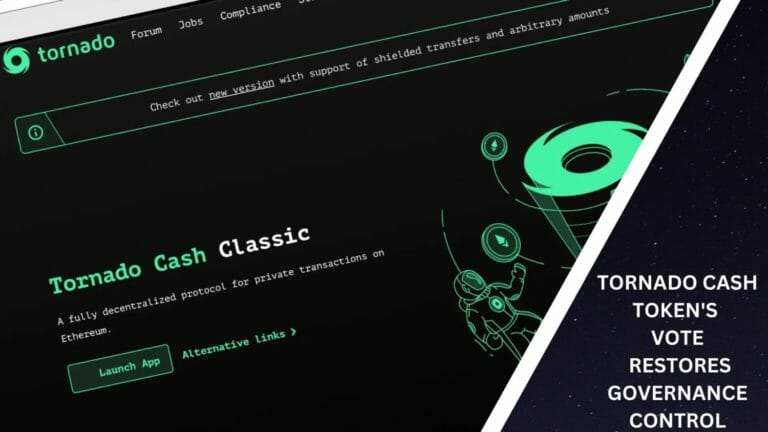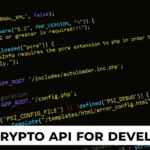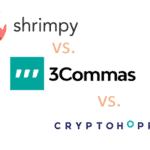If Bitcoin is the original idea of digital gold and Ethereum is programmable money, then stablecoins are the quiet workhorses that make decentralised finance possible. They may not generate the same kind of hype, but every serious trader, lender, and builder in crypto relies on them. Without stablecoins, the entire DeFi ecosystem would be like trying to run a global economy where the currency changes value by ten per cent every hour. Today, most stablecoins are centralised. Tokens like USDC and USDT dominate volumes, with trillions of dollars settling through them. They are backed by traditional financial institutions that hold reserves in dollars and securities. That makes them stable in practice, but it also introduces a contradiction: the supposedly decentralised world of crypto depends on a handful of banks and issuers. If regulators freeze accounts or custodians fail, the tokens can be frozen or destroyed. This tension has sparked years of research into decentralised alternatives.
Decentralised stablecoins aim to be free of off-chain dependencies, instead using on-chain collateral and algorithms to maintain their peg. Some, like MakerDAO’s DAI, have succeeded at scale but gradually compromised on purity, relying on USDC as collateral. Others, like Terra’s infamous UST, collapsed catastrophically when confidence and collateral backing failed. Each experiment teaches new lessons, but the “holy grail” — a decentralised, robust, and scalable stablecoin — has remained elusive. Into this landscape steps Hylo, a protocol built on Solana. Unlike many others, Hylo is not just a single stablecoin. It is a three-part system that generates stability, leverage, and yield, all from the same pool of collateral. Understanding Hylo is essential not only for Solana users but for anyone interested in how the next generation of decentralised money could be designed.

Table of Contents
Solana as a Home for Decentralised Money
The decision to build Hylo on Solana is strategic. Solana platform is known for its speed and scalability, processing thousands of transactions per second with fees measured in fractions of a cent. This matters enormously for a stablecoin protocol, where constant minting, redeeming, and arbitrage must happen without friction. On slower or more expensive chains, users might hesitate to engage in the small, frequent transactions that keep pegs stable. On Solana, the cost is so low that the system can be more fluid and responsive.
Another feature of Solana’s ecosystem is the flourishing of liquid staking tokens, or LSTs. Normally, when someone stakes SOL to help secure the network, their tokens are locked, inaccessible for the duration of the staking period. Liquid staking solves this by issuing a derivative token, such as mSOL from Marinade, JitoSOL from Jito, or bSOL from Blaze. These tokens represent staked SOL, accrue staking rewards, and can still be used freely in DeFi. They combine productivity with liquidity.
For Hylo, LSTs are the perfect collateral. They provide security because real staked SOL backs them, but they also generate yield, which strengthens the protocol over time. This means Hylo’s stablecoin is not just sitting on idle reserves but is always backed by income-generating assets. In traditional finance, it would be as if every dollar in the bank automatically earned interest while still being spendable.
Also Read: Hylo Review – The Only Stablecoin Play You Need Now
The Architecture of Hylo

Hylo is structured around three interlocking tokens: hyUSD, xSOL, and sHYUSD. Each serves a distinct user type and risk appetite, but together they form a closed and balanced system.
hyUSD: Stability at the Core
HyUSD is Hylo’s stablecoin, pegged to the dollar. Users can mint it by depositing LSTs(Liquid Staking Token) as collateral. The idea is straightforward: if you want a stable asset to use in DeFi without relying on centralised stablecoins, hyUSD is your option. Incentives and arbitrage opportunities maintain their peg. If it drifts above one dollar, it becomes profitable to mint more. If it slips below, users can redeem it against collateral, which pulls the price back up.
The crucial distinction is that hyUSD is backed not by custodial dollars but by Solana-based liquid staking tokens. That gives it a native connection to the blockchain it lives on and avoids the off-chain dependencies that plague other designs.
Also Read: Best Futures Trading Signals
xSOL: Leveraged Exposure Without Liquidations
While hyUSD offers stability, xSOL is designed for risk-takers. It represents a leveraged exposure to SOL. If SOL’s price rises, xSOL rises more. If SOL’s price falls, xSOL falls at a faster rate. This is attractive to speculators who want amplified returns without going through margin systems.
What makes xSOL unique is the absence of liquidations. In most leverage systems, if collateral value falls below a threshold, the position is forcibly closed, often wiping out the user. Hylo avoids this by embedding the leverage in the structure of xSOL itself. Losses are absorbed naturally, and gains accrue directly. There are no margin calls, no cascading liquidations.
For example, imagine SOL rises by 10 per cent. In Hylo’s system, xSOL might increase by around 20 per cent. If SOL falls by 30 per cent, xSOL could collapse in value, but the losses are borne by holders of xSOL alone. The rest of the system remains balanced because the collateral equation still holds.
Also Read: 5 Best Free Crypto Signals | Top Crypto Trading Signals Telegram Channel
sHYUSD: Yield Through Stability
The third token, sHYUSD, is for those who want income rather than speculation. By staking hyUSD into Hylo’s Stability Pool, users receive sHYUSD in return. This token accrues yield from multiple sources: the staking rewards generated by the collateral LSTs, the fees the protocol collects, and premiums earned during rebalancing events.
The result is a reported annual yield of around seventeen per cent. This is high by traditional standards but understandable when broken down. Staking rewards on Solana may yield 6–7 per cent. Risk premiums during system stress make up the rest. Together, they form a competitive and sustainable yield stream for participants.
Also Read: Earn 17% Stablecoin Yield With Hylo? Here’s How Now
The Balancing Equation

All of Hylo rests on a single balancing equation:
Collateral TVL = (hyUSD supply × $1) + (xSOL market value).
This formula ensures that the total value of collateral locked in the protocol always equals the claims of hyUSD holders plus the current value of xSOL. It is the backbone of the system, allowing it to operate without price oracles.
In practice, this means that the system can self-balance. If more hyUSD is minted, collateral shifts accordingly. If xSOL rises or falls in value with SOL, the equation still holds. As long as the collateral — the LSTs — remain sound, the system is solvent.
The avoidance of oracles is critical. Many DeFi collapses have stemmed from oracle manipulation or delays. Hylo sidesteps this by not depending on external feeds at all. Its math is internal and self-referential, reducing attack surfaces and making it more robust.
Also Read: Staking Crypto – An Ultimate Guide on Crypto Staking
Maintaining the Peg
Peg maintenance is achieved through incentives. When hyUSD trades above one dollar, it is profitable for users to mint more and sell it, bringing the price down. When it trades below, redemptions become attractive, pulling the price back up. Dynamic fees further guide behaviour, making certain actions more or less attractive depending on what the system needs.
This is not unlike how central banks use interest rates to influence economic activity, but here it is executed entirely by code and user incentives. The result is a stablecoin that holds its peg without central intervention.
Also Read: CoinRabbit Review | Borrow USDT for your Bitcoin and Ethereum
The Role of Yield and Incentives

Hylo does not rely only on mechanics. It also uses incentives to bootstrap adoption. The most prominent is the XP points system, launched in its early phase. Users who mint hyUSD, stake sHYUSD, or hold xSOL earn XP points. These points determine rankings on leaderboards and grant symbolic crowns or multipliers.
While XP points do not yet have formal value, the expectation is that they may eventually connect to governance rights or a token launch. This has spurred significant early participation, echoing how other DeFi and NFT projects have attracted communities through gamified reward systems.
Combined with the attractive yield on sHYUSD, these incentives make Hylo appealing not only as a protocol but as an ecosystem that rewards its earliest users.
Also Read: Best Spot Trading Signals
Strengths of Hylo’s Design

Hylo’s architecture offers several strengths compared to existing stablecoin systems. Its use of productive collateral ensures that the system grows stronger over time as staking rewards accumulate. Its avoidance of oracles eliminates a major risk vector. The absence of liquidations makes xSOL safer for users who want leverage without sudden wipeouts. And the three-token system creates a balance of stability, speculation, and yield that appeals to different user types simultaneously.
In effect, Hylo creates a miniature economy where each type of participant plays a role that sustains the whole. Stable users provide confidence, risk-takers absorb volatility, and yield seekers provide insurance liquidity. Together, they form a balanced system of decentralised money.
Also Read: NFT Explained
Risks and Limitations
Despite its strengths, Hylo is not risk-free. Its reliance on LSTs means it inherits their risks. If JitoSOL or mSOL were ever to lose their peg to SOL due to validator issues or slashing, Hylo’s collateral would suffer immediately. This kind of “stacked risk” is inherent to DeFi protocols that build on top of others.
Extreme market volatility is another test. While xSOL holders bear the brunt of SOL crashes, the system must still function smoothly under stress. Severe liquidity shortages could challenge peg stability, even if the math remains sound.
Complexity also poses a barrier. Many users may find the three-token system confusing, especially those new to DeFi. Without careful interfaces and education, adoption may be slowed.
Finally, adoption itself is still limited. For hyUSD to become decentralised money, it must achieve scale comparable to USDC or DAI. That means liquidity pools, integrations with lending protocols, and widespread cultural trust. Until then, it remains a promising but small experiment.
Comparisons with Other Stablecoins
To appreciate Hylo’s design, it helps to place it alongside other well-known stablecoins. Each protocol has approached the problem of stability, decentralisation, and scalability differently, and the results reveal both strengths and pitfalls.
Below is a table comparing Hylo with several leading stablecoin systems:
| Protocol | Collateral Model | Use of Oracles | Liquidations | Yield Mechanism | Unique Features / Weaknesses |
|---|---|---|---|---|---|
| Hylo (hyUSD / xSOL / sHYUSD) | Backed by Solana liquid staking tokens (mSOL, JitoSOL, bSOL). Productive collateral. | No – oracle-free design; internal math keeps system balanced. | No – xSOL is leveraged without liquidations. | Yield from LST staking rewards, protocol fees, and Stability Pool risk premiums (~17% APY). | Triple-token system balancing stability, leverage, and yield. Still early-stage, adoption risk. |
| MakerDAO (DAI) | Overcollateralized crypto (ETH, USDC, others). | Yes – relies on oracles to track collateral prices. | Hybrid design balancing algorithmic and collateral models. Greater complexity, exposure to centralisation. | DAI Savings Rate (variable, ~3–5%), protocol fees. | Yes – vaults liquidated if the collateral ratio falls. |
| Frax (FRAX) | Fractional algorithmic + collateralized model. | Yes – uses oracles for collateral valuation. | Partial – depends on market conditions. | Frax staking, AMO (Algorithmic Market Operations). | Hybrid design balancing algorithmic and collateral models. Greater complexity, exposure to centralization. |
| TerraUSD (UST, collapsed) | Algorithmic peg with LUNA as balancing token. | Yes – needed oracle feeds for swaps. | No liquidations in the same sense, but peg depended entirely on demand. | Anchor Protocol’s unsustainable yields (~20%). | Collapsed in 2022; showed risks of reflexive, over-reliant algorithmic models. |
| UXD (Solana) | Backed by delta-neutral positions (spot + perpetual futures). | Yes – depends on oracles and external derivatives markets. | No – peg maintained through hedged positions. | Derivatives funding rates, arbitrage income. | Innovative on Solana but reliant on external market functioning and oracles. |
| USDC / USDT | Fully centralized, backed by off-chain fiat reserves. | N/A – peg maintained by trust in issuer. | No – always redeemable 1:1 (unless frozen). | None (no yield by default). | Most liquid stablecoins; centralized, subject to regulation and blacklisting. |
Future Outlook
Looking forward, Hylo’s path will depend on its ability to scale. More forms of LST collateral will broaden its base. Deeper integration into Solana’s major decentralised exchanges and lending protocols will make hyUSD more useful. A governance token seems likely, with the XP program paving the way. Cross-chain expansion could also bring Hylo beyond Solana in the long term.
External factors will also play a role. Regulatory scrutiny of stablecoins is intensifying. Even decentralised systems may face pressure, especially if they grow large enough to be considered systemic. Market conditions, especially in volatile crypto cycles, will test Hylo’s resilience.
Conclusion
Hylo is one of the most innovative experiments in decentralised stablecoin design. By combining stability, leverage, and yield in a single system, it offers a vision of what decentralised money could look like. Its use of productive collateral, avoidance of oracles, and elimination of liquidations set it apart from predecessors. It is still early, with adoption limited and risks present. But as a concept, Hylo demonstrates how careful design can align incentives and distribute risk across participants. Stable users, speculators, and yield seekers each play a role in sustaining the system. Whether Hylo becomes the backbone of Solana’s DeFi or remains a niche protocol, it has already contributed valuable lessons to the ongoing search for decentralised money. For those watching the evolution of stablecoins, Hylo is not just another token. It is a blueprint for the future.
Frequently Asked Questions (FAQs)
What makes Hylo different from other stablecoins like USDC, DAI, or Frax?
Hylo is built on Solana and uniquely combines three tokens—hyUSD, xSOL, and sHYUSD—into one system. Unlike USDC/USDT (which are centralized and backed by fiat reserves), or DAI (which is overcollateralized but depends on centralized assets like USDC), Hylo is fully on-chain and doesn’t rely on oracles or liquidations. Its collateral—liquid staking tokens—also generates yield, making it a productive system.
What role do liquid staking tokens (LSTs) play in Hylo’s design?
Liquid staking tokens such as mSOL, JitoSOL, and bSOL form Hylo’s collateral base. They represent staked SOL that keeps earning rewards while staying liquid. This means Hylo’s stablecoin is always backed by productive collateral—similar to combining yield farming with a stablecoin.
What are the risks of using Hylo compared to other stablecoins?
Hylo’s main risk lies in its dependence on LSTs. If one of these tokens (like JitoSOL) depegs from SOL, Hylo’s collateral could weaken. Extreme volatility in SOL could also test the system. Additionally, Hylo’s three-token model is complex, which might confuse new users. In contrast, centralized stablecoins like USDC/USDT carry regulatory risk but are easier to understand.
How do users earn yield with Hylo?
Users can stake hyUSD in Hylo’s Stability Pool to receive sHYUSD. This token earns yield from:
1. LST staking rewards (6–7% typical),
2. Protocol fees,
3. Risk premiums during rebalancing.
Combined, this yield can reach ~17% APY—higher than traditional bank savings and comparable to early DeFi opportunities. However, like Anchor Protocol’s 20% yield in TerraUST (which proved unsustainable), Hylo’s yields also carry risks tied to collateral performance and market adoption.
Does Hylo have a governance token or an airdrop planned?
Currently, Hylo operates with an XP points system to reward early users who mint hyUSD, stake sHYUSD, or hold xSOL. These XP points rank users on leaderboards and may act as a foundation for future governance rights or a token airdrop, similar to how other DeFi protocols bootstrapped communities. While no official governance token has launched yet, the system is designed with community ownership in mind—so an airdrop or token release is highly possible in future.










